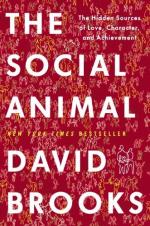
|
Lesson 1 (from introduction; Chapters 1-2)
Objective
In his introduction, David Brooks explains the logic underpinning his framing device for "The Social Animal": presenting his ideas as a narrative of two people. His inspiration is Rousseau's Emile, which envisioned a student and tutor to illustrate the author's ideas.
The objective of this lesson is to examine the use of narrative to present opinion.
Lesson
1. Divide the class into three groups and give each group an excerpt from a non-fiction work in which a fictional narrative is employed: Emile, Socrates' Dialogues, and Three Uses of the Knife. What social or philosophical argument is debated in each text? What position does each character represent? How does the author employ this conceit to create a compelling argument for his position?
2. For class discussion: In combining the fictional with the critical, an author like Brooks risks creating an unwieldy hybrid. As a class, debate how much literary...
|
This section contains 7,411 words (approx. 25 pages at 300 words per page) |

|




